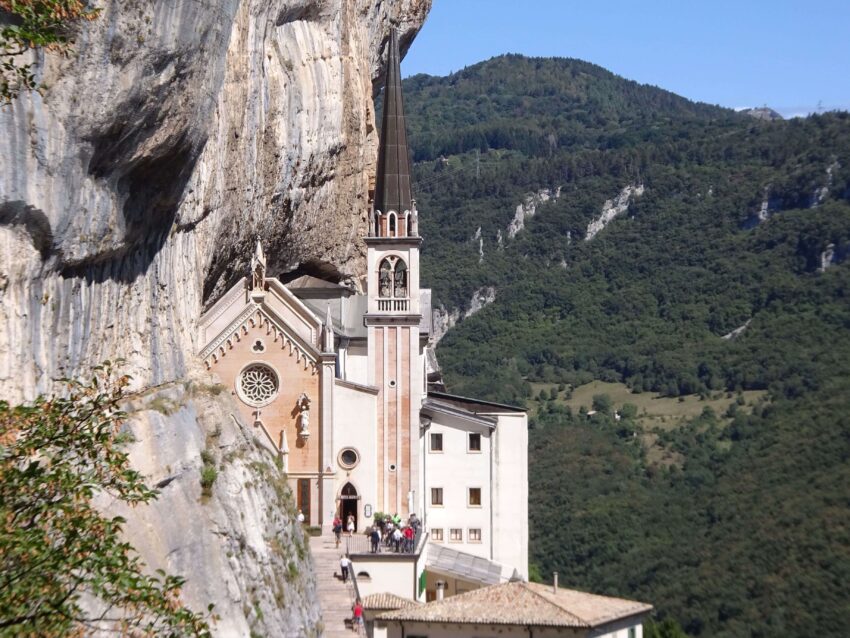Undoubtedly one of the most striking sights in the Veneto Region, the Sanctuary of the Madonna della Corona clings dramatically to the side of a cliff, hundreds of meters over the valley floor. Dating back to the 15th century, the Basilica is one of Italy’s most important pilgrimage sites, therefore drawing worshippers and tourists in equal numbers.
Apart from its striking location, we found the church to be well worth visiting for its unusual architecture incorporating the rock of the cliff-face as well as for the sweeping views afforded from the terraces surrounding the building. It’s a unique place and one you shouldn’t miss when touring Northern Italy. Read on for everything you need to know about exploring it.
This post may contain affiliate links, and I might earn a small commission at no additional cost to you. For more info, click here.
The history of the Madonna della Corona Sanctuary
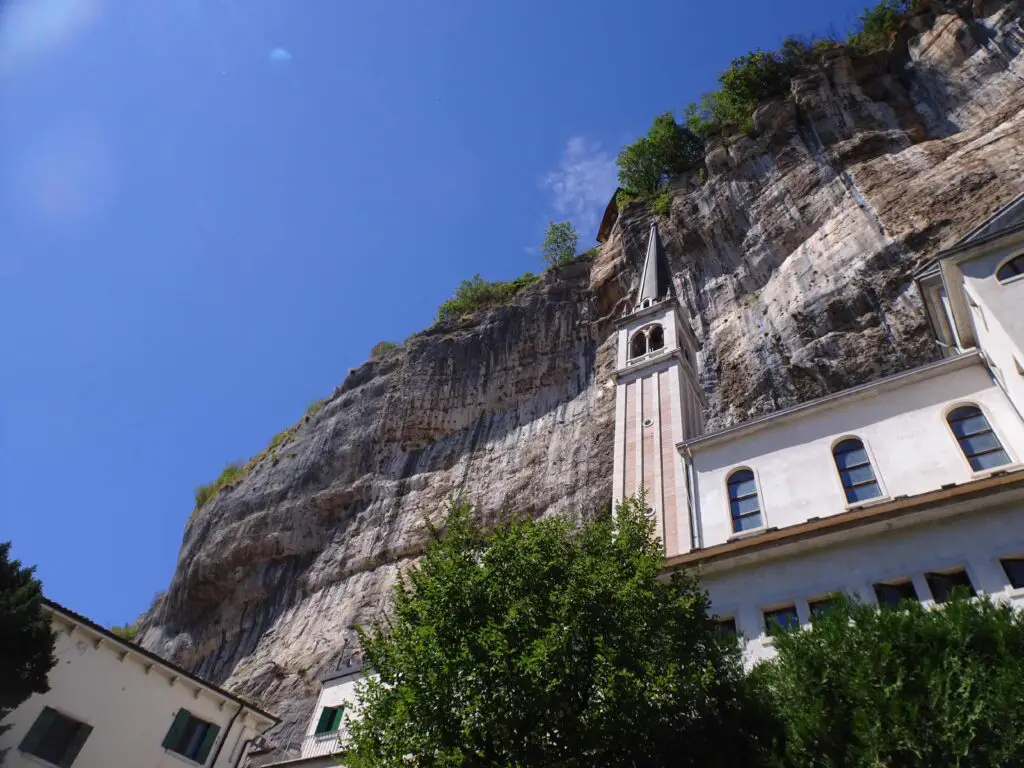
The story of the basilica dates back to medieval times, as a hermitage is said to have been erected here around 1000 AD by monks from Verona’s San Zemo Church. A bigger monastery was built in the 13th century, but still the hermits lived far removed from daily live, as the approach to the place was strenuous and dangerous.
The original church building dates to the 16th century but has been remodelled, restructured and enlarged countless times. The mythical appearance of a sculpture of the Virgin around that time is what kick-started the steady stream of pilgrims making the trip to the sanctuary. Nowadays people still flock here to get rid of their unwieldy load of sins, while others are content with enjoying the unique architecture and splendid views.
Exploring the Madonna della Corona Sanctuary
Approach to the Sanctuary
On the way from Spiazzi you’ll have to follow a zig-zagging road down the mountain slope, which is decorated by some sculptural scenes of the Stations of the Cross and offers great views of the valley floor and towards the basilica. Alternatively, there’s a shorter and steeper approach via a set of stairs but this doesn’t have the views that the road offers.
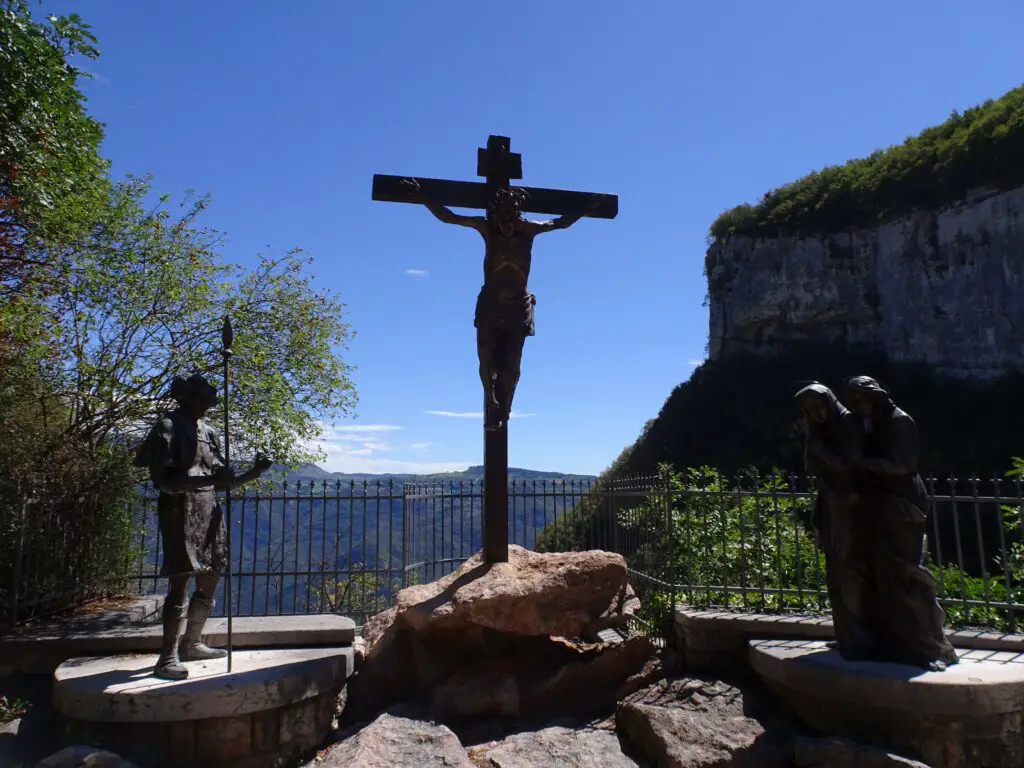
The last part of the path leads through a stone gallery cut through the rock, sparing you the once-strenuous climb up and down this part of the mountain. The view before that last stretch of road to the sanctuary is especially breathtaking, so make sure to take a peek (and perhaps a picture), even if you decide on using the stairs.
Church
The neo-gothic church directly adjoins the cliff-face, the fact of which seems to dwarf the building despite its notable size. Notice the finely carved stone sculptures on the marble-decked façade as well as the bronze reliefs depicting biblical scenes to each side of the main portal.
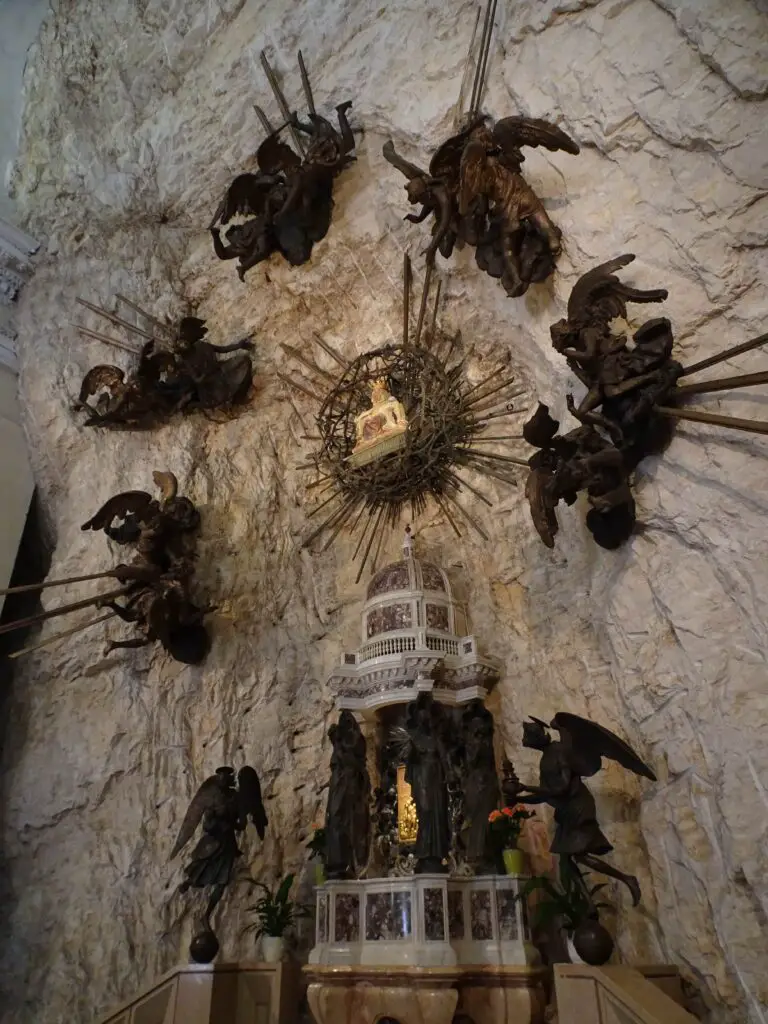
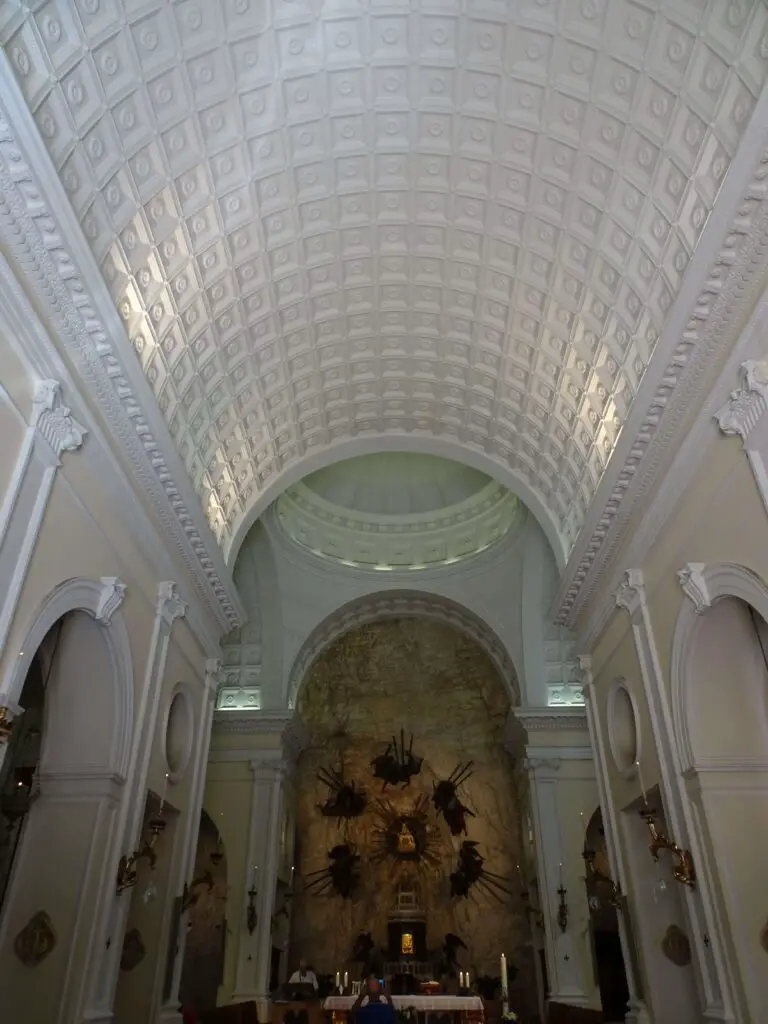
The interior sports brightly-painted walls and columns, therefore managing to give the nave a light appearance despite the scarcity of windows. Notable features are the neoclassical barrel vault and the unusual altar piece consisting of bronze reliefs of angels affixed directly to the rock face of the mountain.
The Pietà Sculpture forming the centrepiece of the altar is the one that is said to have appeared out of thin air, transforming the humble hermitage into the pilgrimage site it is today.
Chapel of Confessions and Scala Santa
There are several other places of worship around the main church. If you veer off to the right halfway up the stairs leading to the basilica, you’ll come to a small subsidiary chapel with a Scala Santa modelled on the one in Rome’s Basilica San Giovanni in Laterano. The stairs lead up to a painting of Christ.
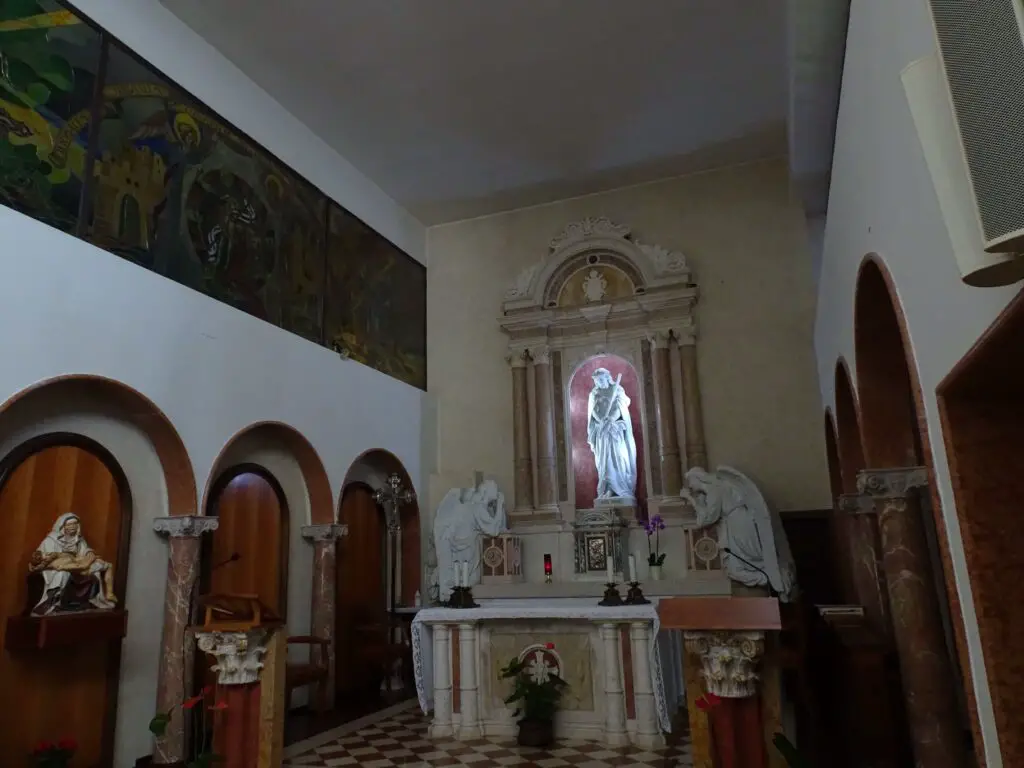
People who think they seriously have to make up for something can climb the Scala Santa on their knees, while for everyone else there’s a small stairway to the side which you can ascend the old-fashioned way.
Other rooms and Terraces
If you pass the stairs leading to the basilica on the right instead of ascending, you’ll come to a couple of rooms containing votive objects given to the church by avid pilgrims and the “Mater dolorosa”-collection of 80 Pietà images in differing styles.
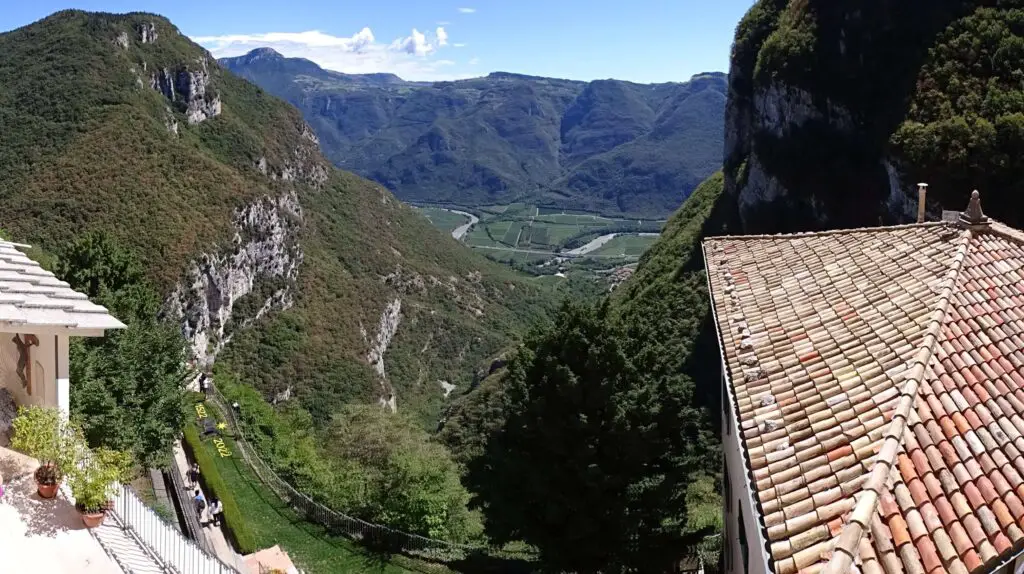
There’s also a large nativity scene, close to which you can descend a set of stairs and walk past a room containing glass cases with the mortal remains of several erstwhile hermits to reach the lower terrace of the complex. From here you’ll have the best views of the valley floor. The small “Sacellum pietatis”-building is the place where the venerated statue ostensibly appeared before being brought to the church building.
Another place with nice views can be found between the church and the tunnel through the rock face. Here you’ll also find a small cafeteria, where pilgrims can enjoy an Aperol Spritz celebrating being absolved of constantly drinking too much Aperol Spritz or something to that effect.
Practicalities
How to get to the Madonna della Corona Sanctuary from Verona
By far the easiest way to get here without your own transport would be to take an organized tour from Garda or Bardolino, like this half-day-tour, which includes transport, a tour guide and lunch at a local farm.
If you prefer to do the trip on your own, you could take Bus 476 from Garda to the terminus at Caprino Veronese and change to Bus 471 or 476 to reach the town of Spiazzi. The trip should take about 1,5 hours (more or less depending on the exact connection). You can check connections on this site.
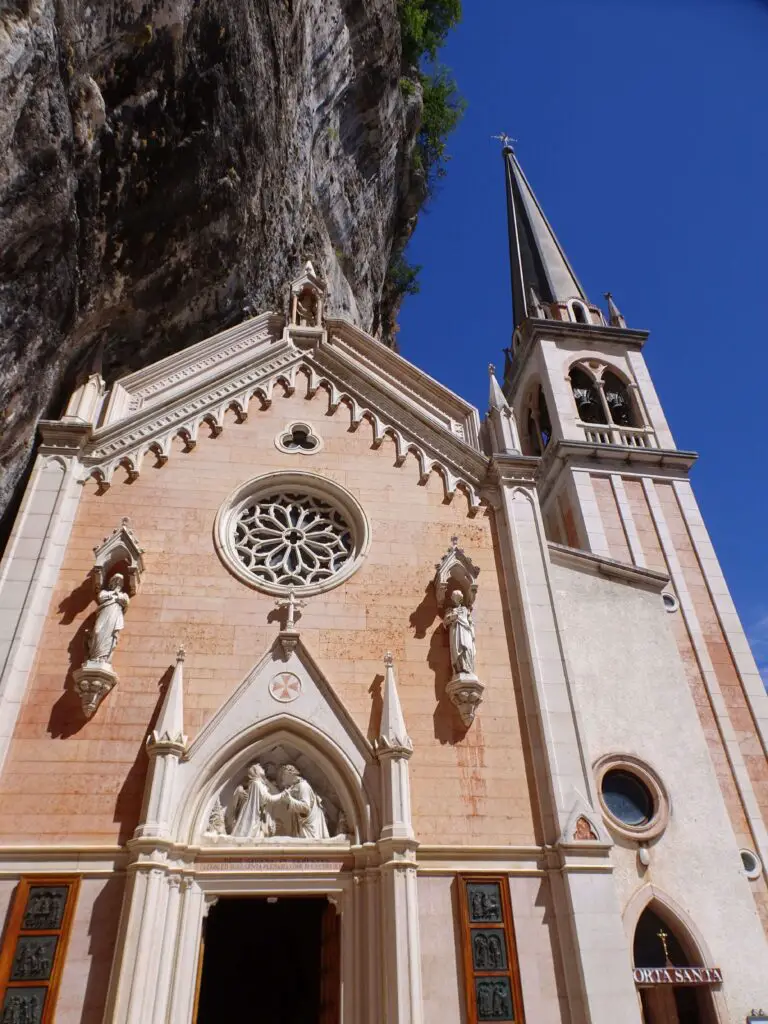
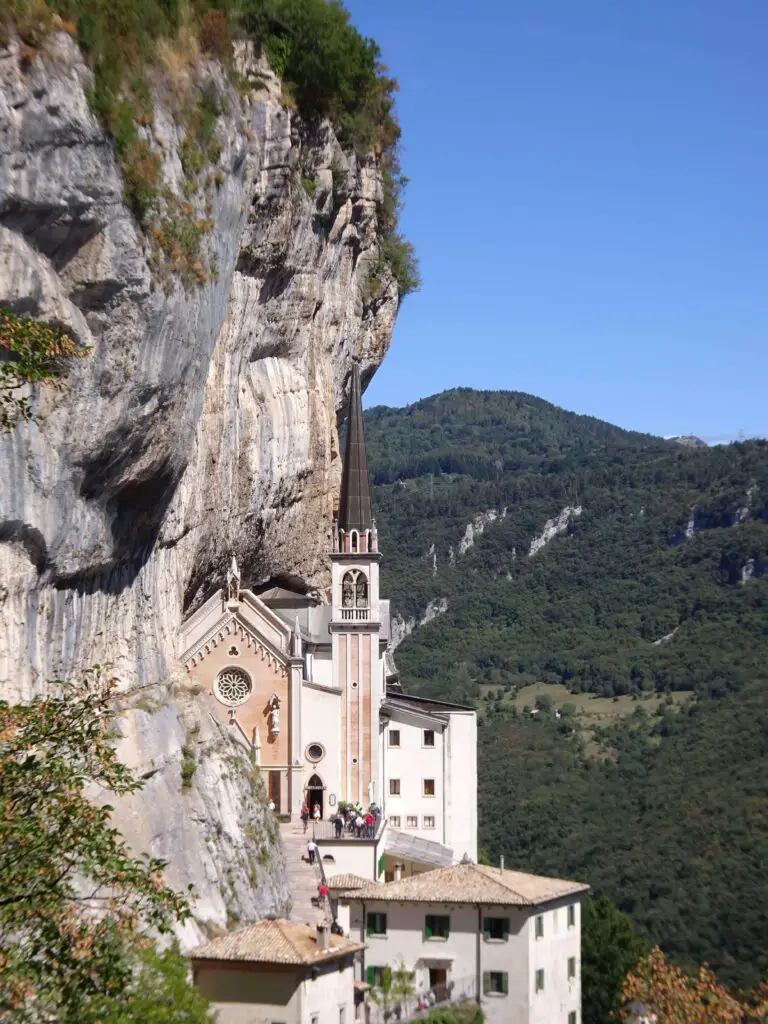
Otherwise, you could also rent a car in Verona or at Lake Garda, which would allow you to go by your own pace and stop of in little villages along the way. Have a look below to find the best available deals on rental cars.
How to get to the Madonna della Corona Sanctuary from Verona
Reaching the sanctuary from Verona by public transport is somewhat complicated, although not impossible. To do it, you can take Bus 173 from Verona Porta Nuova to the terminus at Caprino Veronese and change to Bus 471 or 476 to reach the town of Spiazzi.
The entire trip takes over two hours each way. Notice that Bus 476 has fewer connections, so you have to choose the right time to start in Verona or you’ll be stuck in Caprino Veronese for two hours. You can check connections on this site.
Where to stay near the Madonna della Corona Sanctuary
We visited the basilica as a day trip from Verona but if you would like to stay in the pleasant natural surroundings of the Monte Baldo area, there are some mid-range options available, like Hotel Corona or Hotel Belvedere.
See also
